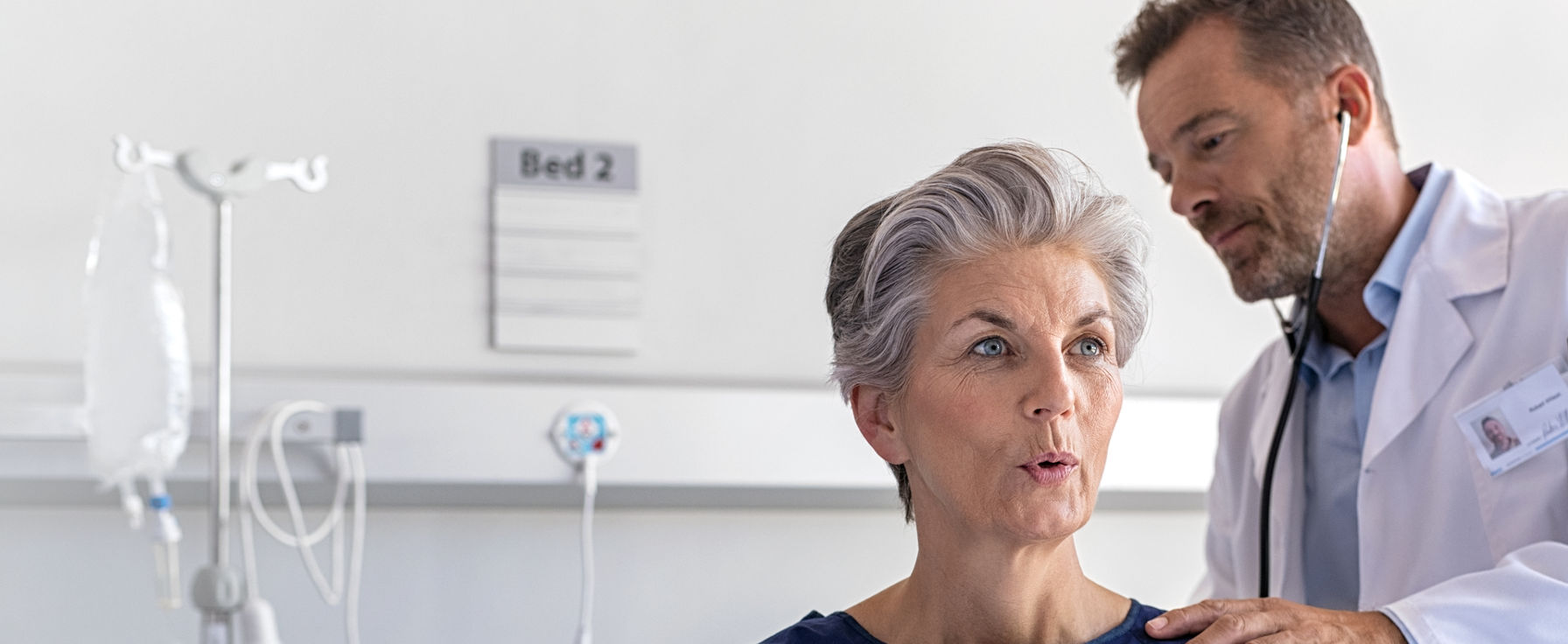Streptococcus is a genus of gram-positive, spherical bacteria that typically appear in chains. There are more than 50 recognized species within this genus; however, only five cause human disease. Streptococci are subdivided into five main pathogenic groups commonly found in humans (A, B, C, D and G). This subdivision is based on the antigenic differences of the carbohydrates in the bacterial cell wall. Group A Streptococcus (GAS) encompasses one species, Streptococcus pyogenes. Group B Streptococcus also encompasses one species, Streptococcus agalactiae. Groups C, D and G each encompass several species.
Streptococcus pyogenes accounts for more than 90 percent of the diseases caused by streptococci and is the most common cause of bacterial pharyngitis. Streptococcal diseases are classified as either suppurative (i.e., primary infections) or nonsuppurative (i.e., complications that arise from primary streptococcal infections). The formation of pus is a common characteristic of suppurative diseases caused by Streptococcus pyogenes infection.
Suppurative diseases include:
Streptococcal pharyngitis (strep throat)
Puerperal fever
Impetigo
Cellulitis
Erysipelas
Nonsuppurative diseases include:
Scarlet fever
Rheumatic fevers
Acute glomerulonephritis
Erythema nodosum
Streptococcal pharyngitis (strep throat) is a common childhood bacterial infection. Group A Streptococcus (GAS) is responsible for most cases, although other groups, such as C and G, may also cause disease. Strep throat affects all age groups, but is most common in children between the ages of 5 to 15 years. Strep throat has an incubation period of two to four days. Symptoms include:
Abrupt onset of sore throat accompanied by fever
Malaise
Headache
People with strep throat may experience additional symptoms such as nausea, vomiting and abdominal pain. Physical findings often reveal pharyngeal erythema, enlarged tonsils with exudate and tender cervical lymphadenopathy.
Viral pharyngitis may mimic streptococcal pharyngitis, but unlike strep throat, viral pharyngitis will often be accompanied by cough and rhinorrhea, as well as cervical lymphadenopathy and pharyngeal exudates. The common cold, influenza, adenovirus and mononucleosis infections may also present with signs and symptoms of pharyngitis.
Streptococcal diseases such as strep throat are spread by direct person-to-person contact via nasal and salivary secretions. Crowding is a significant risk factor that increases the likelihood of disease spread. When infected people talk, cough or sneeze, released droplets of the bacteria can be breathed in by those around them. Touching a surface or object that has strep and then touching the nose or mouth can also spread the disease.
While there is no vaccine to prevent streptococcal diseases, there are personal behaviors that can help avoid contracting or spreading diseases like strep throat, including:
Wash hands often with soap and water for 20 seconds, especially after coughing or sneezing
Use alcohol-based hand sanitizer to wash hands if no soap and water are available
Cover the nose and mouth with a tissue when coughing or sneezing
Toss used tissues into a waste basket
Cough or sneeze into the top of your sleeve if a tissue isn’t available
The diagnosis of strep throat is based on symptoms, physical findings and results of diagnostic procedures. Prompt and accurate treatment are paramount to prevent the occurrence of non-suppurative diseases such as acute rheumatic fever and post-streptococcal acute glomerulonephritis, which can develop following an infection.
The standard procedure for group A strep diagnosis is bacterial culture, but results may take two to three days. As a result, physicians must either treat patients presumptively while awaiting culture results or, alternatively, withhold antibiotic therapy until the presence of Streptococcus pyogenes is confirmed with culture. Since the 1980s, commercial rapid antigen detection tests have been made available as an effective method of detecting group A strep.
The advantage of rapid antigenic diagnostic tests is that they can be quickly performed in the physician’s office. However, due to some limitations in test sensitivity, supplemental testing may be required for negative results. Molecular testing methods for the detection of group A strep, while not as rapid as antigen testing, usually provide more definitive results (e.g., with no supplemental testing required). However, molecular tests for group A strep are not always offered at the point of care while the patient is at the doctor’s office.
Antibiotic treatment for strep throat is recommended when symptoms indicate streptococcal pharyngitis and there is a positive result from a throat culture or rapid antigen test. Treatment can reduce the duration of symptoms and the likelihood of complications such as retropharyngeal abscess, but the primary purpose of treatment is to prevent rheumatic fever. Asymptomatic patients are not recommended to be tested. However, if tested, asymptomatic patients are not recommended to be treated, even in instances that they test positive.
- Lyra® Direct Strep Assay
- Solana® GAS Assay
- Solana Strep Complete Assay
- Quidel Molecular Strep A+G Control Set
- QuickVue® Dipstick Strep A Test
- QuickVue In-Line Strep A Test
- QuickVue+ Strep A Test
- Sofia® Strep A FIA
- Sofia Strep A+ FIA
- Virena® System






